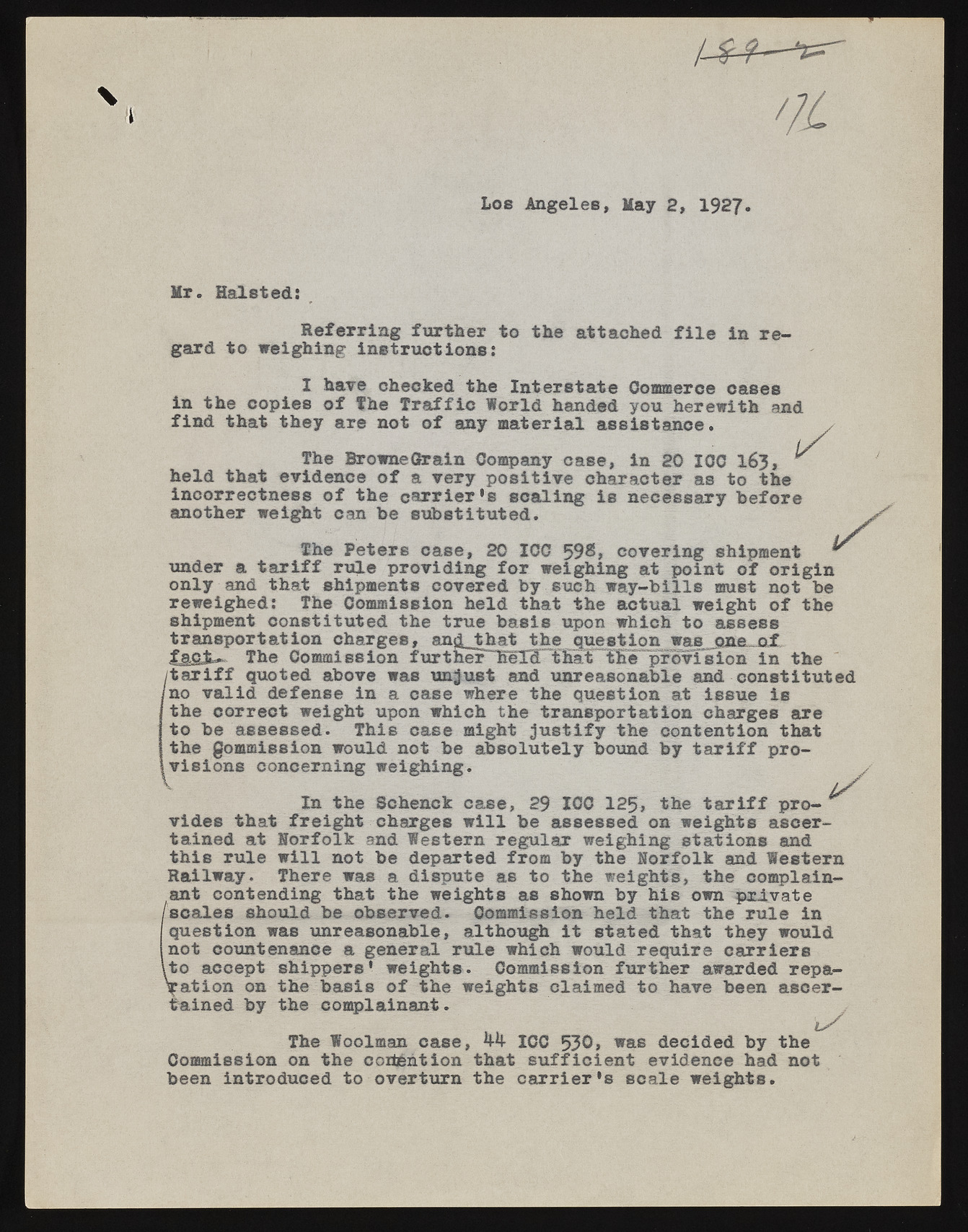Copyright & Fair-use Agreement
UNLV Special Collections provides copies of materials to facilitate private study, scholarship, or research. Material not in the public domain may be used according to fair use of copyrighted materials as defined by copyright law. Please cite us.
Please note that UNLV may not own the copyright to these materials and cannot provide permission to publish or distribute materials when UNLV is not the copyright holder. The user is solely responsible for determining the copyright status of materials and obtaining permission to use material from the copyright holder and for determining whether any permissions relating to any other rights are necessary for the intended use, and for obtaining all required permissions beyond that allowed by fair use.
Read more about our reproduction and use policy.
I agree.Information
Digital ID
Permalink
Details
Member of
More Info
Rights
Digital Provenance
Publisher
Transcription
f j i Loe Angeles, May 2, 1927. Mr. Halsted: Referring further to the attached f i l e in regard to weighing instructions: in the copies o f the T ra ffic World handed you herewith and find that they are not of any material assistance. held that evidence o f a very positive character as to the incorrectness of the c a r r ie r 's scaling is necessary before under a t a r i f f ru le providing fo r weighing at point of origin only and that shipments covered by such w ay-bills must not be reweighed: The Commission held that the actual weight of the shipment constituted the true basis upon which to assess transportation charges, and that the question wason e nf fjlfiju The Commission further 1teH tfia't the provision in the I t a r i f f quoted above was unjust and unreasonable and constituted fno valid defense in a case where the question at issue is the correct weight upon which the transportation charges are to be assessed. This case might ju s t ify the contention that the gommission would not be absolutely bound by t a r i f f provisions concerning weighing. vides that freigh t charges w ill be assessed on weights ascertained at Norfolk and Western regular weighing stations and th is rule w ill not be departed from by the Norfolk and Western Railway. There was a dispute as to the weights, the complainant contending that the weights as shown by his own private /scales should be observed. Commiesion held that the ru le in question was unreasonable, although i t stated that they would not countenance a general rule which would require carriers .to accept shippers* weights. Commission further awarded reparation on the basis o f the weights claimed to have been ascertained by the complainant. Commission on the contention that su fficien t evidence had not been introduced to overturn the c a r r ie r 's scale weights. I have checked the Interstate Coamerce cases The BrowneGrain Company case, in 20 ICC 163, another weight can be substituted. The Peters case, 20 ICC 59® > covering shipment In the Schenck case, 29 ICC 125> the t a r i f f pro- 1 / i y The Woolman case, ICC 530, was decided by the

